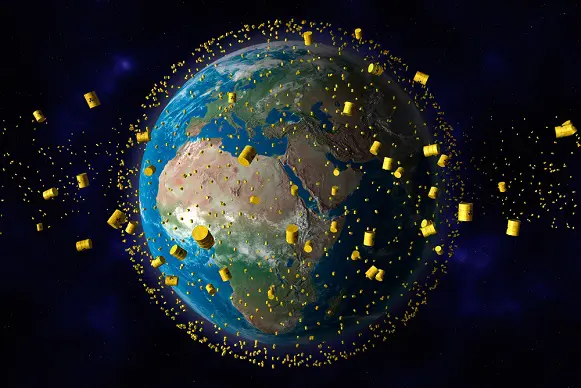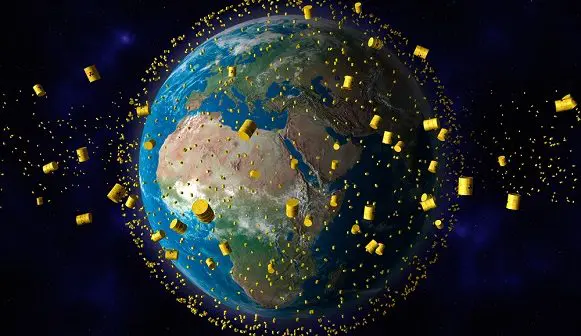
Written by staff writer.
The UK Space Agency’s new Director of Missions and Capability for Discovery and Sustainability says one of her key roles is to bring the agency’s commitment to space sustainability and management of debris into a sharper focus.
Speaking at the recent Secure World Foundation Space Sustainability Summit in New York, Julie Black says building space capabilities that reflect best global practices, such as tracking space objects and reducing or removing debris, is one of eight delivery priorities in the UK Space Agency’s 2022-25 corporate plan.
“The agency space sustainability program is designed to mitigate the risks caused by space debris and promote the responsible use of space through a combination of regulation, standards development, technology development, and international missions,” said Black. “I can sum up our approach in a few words – we are not going to make it (the amount of debris in space) worse, and we are going to start making it better.”
Last year, the space agency estimated there were more than 130 million pieces of space debris orbiting Earth, ranging from tiny flecks of paint to entire satellites. Over 36,000 of the objects have a diameter greater than ten centimetres.
The UK Space Agency is eyeing developing and launching a mission in 2026 to demonstrate the country’s capability to rendezvous, dock, and de-orbit two UK pieces of space debris. “At the end of that mission, the service that will be refuellable and ready to be used again,” said Black. “We’ve invested significantly in the European Space Agency’s space safety program, which includes Demonstration Missions of active debris removal and in-orbit servicing, as well as many smaller missions and activities.”
In conjunction with developing capacities to de-orbit existing debris, minimizing the creation of more debris is also top of the agency’s agenda. That includes creating and rolling out sustainable space practices. Over 6,500 satellites orbit Earth, and almost half of them are inactive. Under a project called Monitor Your Satellite, the agency is pushing out a satellite surveillance and tracking service to licenced UK operators. “That warns of possible collisions so they can maneuver out of the way as necessary,” said Black.
Just two months into her role after a stint as a program director for the UK’s energy regulator, a job she described as complex, Black now has to balance sustainability concerns against rapid growth in the space sector.
“We will drive forward delivery of the UK plan for space sustainability,” she said. “We have made it a priority to invest in industry, especially in companies that work directly to deliver space sustainability through innovation. We also plan to focus on utilizing strong international partnerships, both as an active member of the European Space Agency and through partnerships with global organizations, as they’re fundamental to achieving our goals.”
Black says the UK Space Agency intends to back up the planned 2026 mission with a 2028 servicing mission that will be capable of refuelling an orbiting spacecraft. By the end of this decade, Black says the agency intends to have developed orbital assembly or manufacturing capabilities by reusing the spacecraft launched in 2026 to remove debris.





